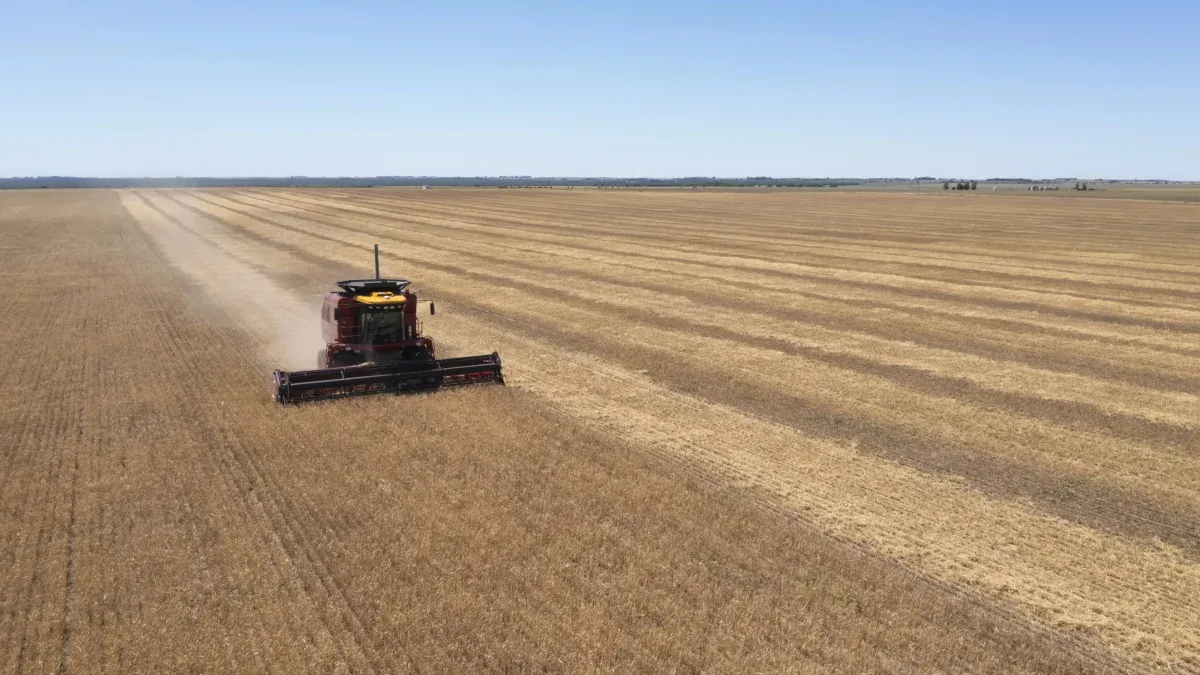Almost 80 years ago, General Juan Domingo Perón inaugurated an aggressive tax policy to the most thriving Argentine sector. Since then, the tax scheme almost never had rest of outrages, and since the crisis of 2001-2002, the problem intensified with the justification that the country lived a “serious situation in public finances”, and must “mitigate the effect of the exchange modifications ”.
Initially, the aliquots were 10% for wheat and corn and 13.5% for soybeans and sunflower. But as Milton Friedman said, “nothing is more permanent than a transitory tax.” The withholdings were not only maintained, but for 2008 they had increased: for corn it was 25%, for the wheat of 28%, and for sunflower and soy of up to 32%and 35%, respectively. That same year a new increase was attempted, which resulted in the famous 125 crisis and its next break within the Kirchnerist-Radical government.
Although this conflict stopped unpublished levels of taxes to the field, the withholdings remained until 2015, when Mauricio Macri reduced them just a few percentage points, and raised them again in 2018 on the occasion of a new financial crisis. Alberto Fernández’s government did nothing to lower them, and if he had more political power, he would probably have increased them.
At this point, the current government has an ethical and moral commitment against taxes. He announced that soybeans will fall from 33% to 26%, while its derivatives will go from 31% to 24.5%. Meanwhile, wheat, corn and barley will go from 12% to 9.5%, and sunflower, from 7% to 5.5%. Everything until June, when it will review the measure.
But for the field it is no longer just a moral issue, but of work, effort and sweat thrown away. Exacerbated taxes have limited the investment and development capacity of agricultural infrastructure to support constant climatic variables. While in the United States, Australia or Brazil itself temperatures are also hostile for the field, its infrastructure investment has allowed us to overcome several challenging events.
The reduction of the withholdings announced by the Minister of Economy, Luis Caputo, is presented as a relief wide The Low.
A deep tax reform
Even so, looking more detail, mitigating the weight of retentions is just a scratch for the archaic Argentine tax system. You can never be against a tax decline, but if we want to get President Javier Milei’s reforms to last, it is necessary to order the tax scheme in the background, starting to banish the idea that less taxes less collection.
These initial measures, such as retention reduction, represent a step in the right direction towards the improvement of the Argentine tax system. While there is still a long way to go and it is essential to be careful to avoid economic imbalances in the state, this measure has the potential to generate a positive impact on the agricultural sector and in all linked activities and businesses. The key is to understand that, by decreasing taxes, producers, investors and merchants will have more resources available to reinvest in their businesses, expand and contribute to the economic growth of the country.
In the short term, many may use these additional resources to settle debts, while others will begin to invest in tangible improvements: acquisition of new machinery, hiring of workers, increased employment registered, purchase of better fertilizers or expansion to new fields. These actions generate a virtuous circle in which economic activity is dynamic and the economy begins to gain traction.
Although some economists and specialists warn about possible fiscal risks, international experience and economic history show that sustained or strategic reductions in tax aliquots, and even the elimination of certain taxes, tend to favor an increase in collection, a decrease in tax evasion and lower levels of corruption. This phenomenon responds, to a large extent, to the psychological effect of taxes: Lower rates generate more voluntary compliance and encourage economic activity.
The tax models of several countries offer concrete examples of success. Regions such as Russia, Ukraine, Baltic countries, Hong Kong and Saudi Arabia have implemented simpler and more efficient tax systems, such as Flat tax or flat taxachieving sustained economic growth, an increase in foreign investment and, surprisingly for some, greater tax collection. This validates the theory of the Laffer curve, which establishes that a simplified tax structure and with low rates encourage economic activity, expanding the taxable base and, therefore, increasing tax revenues.
Argentina must aspire to a tax simplification as a first fundamental step. This implies eliminating those taxes that represent a disproportionate administrative burden and that, in addition, do not contribute significantly to collection. Currently, 138 of the 148 existing taxes in the country generate just 9% of fiscal income, which highlights the urgency of a reform.
The withholdings, although they are part of the 10 main taxes in terms of collection, are only a palliative within a tax system that needs deep transformations. The challenge is to advance accurately, gradually reducing tax burdens to promote sustainable growth without compromising public finances. This is the way to a more fair, efficient and promoter of economic development.
*Tax lawyer of the International Base Foundation
Source: Ambito
I am Pierce Boyd, a driven and ambitious professional working in the news industry. I have been writing for 24 Hours Worlds for over five years, specializing in sports section coverage. During my tenure at the publication, I have built an impressive portfolio of articles that has earned me a reputation as an experienced journalist and content creator.




